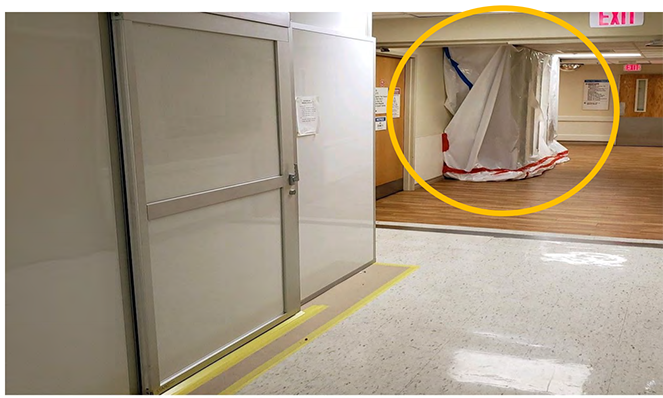
Ensuring adherence to infection control precautions and prevention measures during an occupied healthcare renovation project is notoriously challenging - and critical. To help, we collected actionable advice for ICRA compliance and construction containment from industry experts. For more safety during occupied renovation expert advice, check out our recent blog post and watch our recent panel discussion.
Ensuring ICRA Adherence During Renovations
A proactive and collaborative Infection Control Risk Assessment (ICRA) during the planning stage is a key infection prevention component. But, how should construction and facilities teams ensure infection control requirements once a project is underway? Here are a few expert recommendations:
- Post daily ICRA checklists at work area entrance
- Require HEPA containment carts for work performed outside of construction area
- Design ventilation that can change to create floors or buildings with all negative pressure
- Ensure adequate handwashing sinks
- Anticipate human behavior - and troubleshoot during construction
- Monitor frequently throughout the project
- Institute accountability programs
Watch Infection Preventionist, Dr. Janet Haas and Michigan Medicine’s AEC-Senior Project Manager, Paul Guttman explain their adherence tips:
Construction Barriers: Essential for Infection Control
The standards for infection prevention and safety during occupied healthcare renovations are higher than ever. Many healthcare facilities now demand ‘safety first’ material choices - including temporary containment. In fact, many dust barriers for construction methods used just five years ago are no longer even in the consideration set. A few essentials to help guide selection:
- Ensure all ICRA requirements are met. For example, achieving negative air pressure to filter out harmful dust particles and pathogens is an ICRA-IV requirement, making airtight seals and connections critical design features.
- Do not settle for substandard defaults. Why?
- Drywall actually creates dangerous dust instead of containing it.
- Plastic sheeting is now essentially considered a non-starter in healthcare renovations due to lack of airtight seals - and being easily torn/breached.
- Zipper walls are notoriously left open more than closed - and fail to contain dust and dangerous pathogens.
- Compare these methods and read more about drywall’s disconcerting relationship with Healthcare Associated Infections here.
- Select modular temporary walls designed for safety and the ability to easily respond to healthcare facility infrastructure needs. These may include speedy reconfigurations for changing isolation ward creation, patient surges and reusability for future projects.
Infection prevention will always be a top priority during occupied healthcare renovation and maintenance projects. That’s precisely why we design infection prevention into our modular temporary containment solutions. Our Senior VP of Sales, Bill Cooper explains:
Be sure to download our 5 Containment Questions for Healthcare Renovations tipsheet!
Interested in More Information on STARC Systems?
